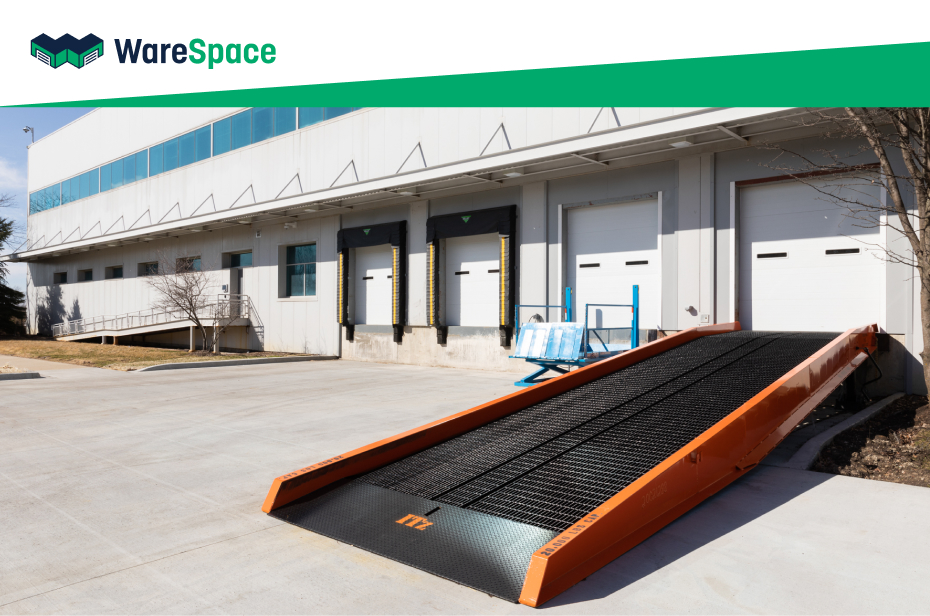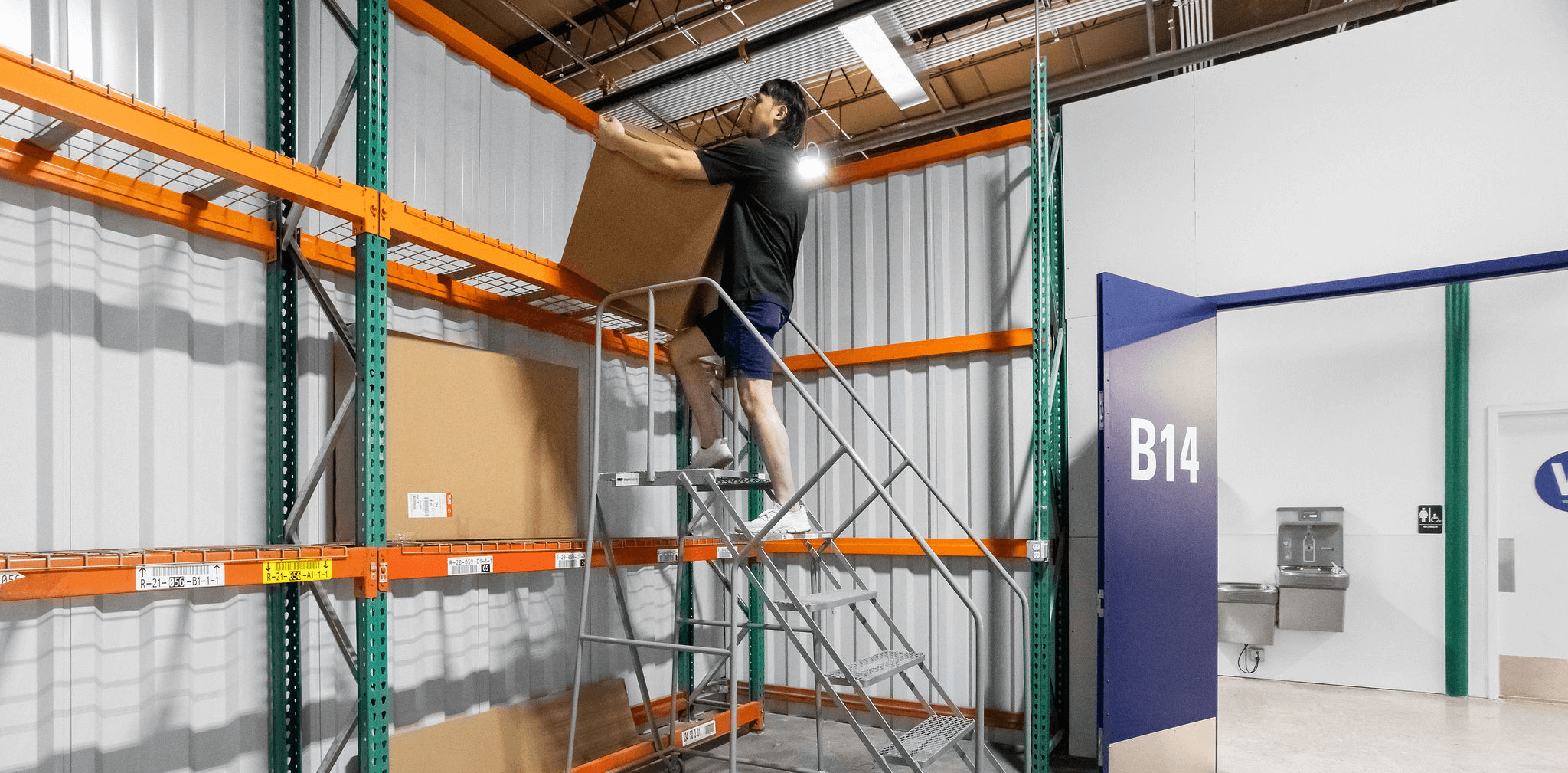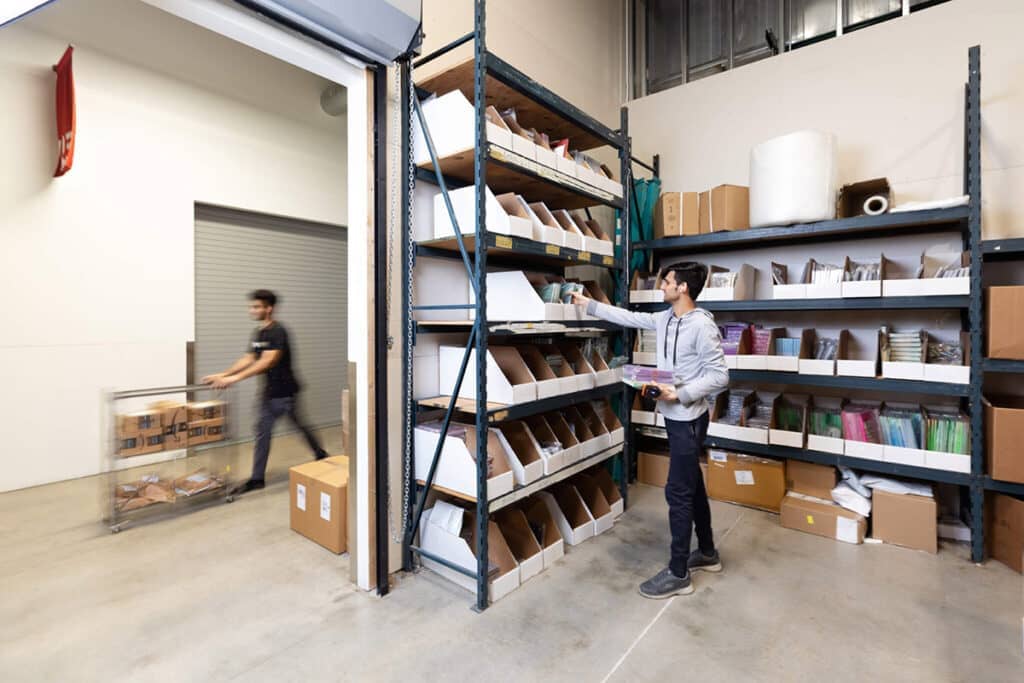The modern era has revolutionized the logistics and supply chain landscape, with e-commerce playing a pivotal role. As businesses grapple with fluctuating inventory levels, seasonal demand surges, and heightened delivery expectations, traditional warehousing solutions, with their rigid constraints, often fall short.
Shared warehouse space emerges as a beacon in this dynamic environment. It offers a flexible, scalable, and cost-effective alternative, allowing businesses to swiftly adapt to market fluctuations. Beyond just saving on space, these shared facilities frequently integrate advanced technological tools that enhance inventory management and order fulfillment. This guide delves deep into the concept of shared warehouse spaces, empowering businesses with the insights to harness its full potential in today’s ever-evolving market.
Why Shared Warehouse Space?
Shared warehouse spaces have risen to prominence as a result, offering a range of benefits that cater to modern businesses’ evolving needs. But what exactly makes them such an attractive option?
- Cost savings: Sharing warehouse space means sharing overhead costs, leading to significant reductions in operational expenses.
- Flexibility: As business needs change, so can the space you rent. Shared warehouse spaces offer the freedom to adapt without long-term commitments.
- Scalability: Whether you’re a budding start-up or an established enterprise, shared warehouses can accommodate growth at every stage.
- Networking opportunities: Working in close proximity to other businesses fosters collaboration, potential partnerships, and valuable industry connections.
Shared warehouse spaces aren’t just about storing goods—they represent a strategic move toward optimization, flexibility, and growth. For businesses looking to stay agile and competitive, considering a shift to shared warehousing can be a game-changing decision.
Things to Consider When Choosing a Shared Warehouse
When you’re searching for the ideal shared warehouse space, there are several crucial factors to keep in mind. These range from the amenities offered to the geographical location, as well as the cost structure and available support. In the next sections, we’ll dig deep into each of these considerations, providing a comprehensive comparison between some of the major players in the industry, including WareSpace, Cubework, Saltbox, and ReadySpaces.
Amenities
The right amenities in a warehouse can drastically affect operational efficiency and overall user satisfaction. Modern businesses need a range of amenities, from high-speed connectivity to top-tier security measures.
- WareSpace: WareSpace stands apart, integrating technology with functional amenities. Their holistic approach ensures businesses thrive without a hitch.
- ReadySpaces: Cutting costs, ReadySpaces delivers minimal amenities, such as no air conditioning or racking, in their rather basic facilities. This bare-bones approach may not appeal to businesses expecting more than just space.
- Cubework: Providing a broad range of amenities, Cubework tries to cater to various business needs, though not always as refined as industry leaders.
- Saltbox: Saltbox’s offerings may appear diverse, but many amenities come at an additional cost rather than being included in the standard package. While they seem keen on serving e-commerce brands, businesses with broader needs might feel sidelined by the prevalence of upcharge add-ons.
The quality and range of amenities can be a determining factor in choosing the right warehouse space.
Locations
Strategic location can streamline operations, reduce transit times, and contribute to timely deliveries, which is crucial for businesses aiming for efficient supply chain management.
- WareSpace: Perfectly poised in commercial epicenters, WareSpace ensures efficient accessibility and reduced transit times.
- ReadySpaces: Located in major urban regions, they position themselves close to business action, a close second to WareSpace’s prime spots.
- Cubework: With locations scattered around, Cubework is accessible but might not always be in the heart of commercial hubs.
- Saltbox: Their centralized locations are decent, though might not cater to all industry-specific needs.
The ideal location often balances accessibility, cost, and proximity to key markets.
Costs
Financial planning is crucial for businesses, and understanding the cost structures of warehouse spaces can significantly affect the bottom line.
- WareSpace: WareSpace excels with transparent, competitive pricing that ensures excellent value, making every penny count.
- ReadySpaces: While ReadySpaces does cater to those on a tighter budget, the sacrifice in amenities can be glaring. This might come across as cutting too many corners for cost-savings.
- Saltbox: While Saltbox does offer a variety of amenities, many aren’t included in the standard pricing. Instead, businesses might find themselves paying extra for add-ons, which can quickly inflate costs, especially for smaller spaces. This approach could be viewed as nickel-and-diming their clients.
- Cubework: Using a tiered pricing model, Cubework tries to cater to various budgets, though clarity can sometimes be an issue.
Economical solutions that don’t compromise on quality are essential.
Size and Scalability
As businesses grow and evolve, they require spaces that can adapt to their changing needs without causing disruptions.
- WareSpace: Pioneering flexibility, WareSpace’s modular offerings ensure that businesses, big or small, find their perfect fit every time.
- ReadySpaces: Their range is commendable but might lack the finesse of top-tier providers.
- Saltbox: Their spaces are decently adaptable, though not always seamlessly.
- Cubework: Presenting a diverse range, they offer good choices for businesses but might sometimes lack that bespoke fit.
With the future in mind, WareSpace ensures businesses are always prepared for expansion or contraction.
Customer Support
Efficient operations require robust support systems. Having a responsive customer support team ensures smooth day-to-day functioning and timely issue resolution.
- WareSpace: With world-class support, WareSpace ensures that businesses are always in good hands.
- ReadySpaces: Focusing on basic operational queries, they offer decent support but might not cover all intricacies.
- Saltbox: Prioritizing feedback, their support is responsive and continuously evolving.
- Cubework: Offering standard business hour support, they’re there for you, but perhaps not always when you need them most.
The strength of a warehouse provider often lies in its support system.
The Rise of Shared Warehouse Space
In the ever-evolving landscape of logistics and supply chain management, the shift towards shared warehouse spaces has become increasingly pronounced. This paradigm shift isn’t merely a temporary adjustment but rather a fundamental change, underscoring the industry’s response to modern market demands.
With the meteoric rise of e-commerce, businesses have found themselves navigating a marketplace that values speed and flexibility. Rapid shipping and fulfillment promises, coupled with fluctuating inventory needs, have made traditional warehousing models less sustainable. Add to this the constant drive for reducing overheads and capital expenditures, and it becomes clear why shared warehouse spaces, with their flexible leases and scalable storage solutions, have risen to prominence. They not only answer the call for adaptability but also empower businesses to respond swiftly to market changes without being weighed down by hefty fixed costs.
Why WareSpace Would Be the Right Fit for You
Navigating the world of shared warehousing can be overwhelming, with a myriad of options each promising the best for your business. However, WareSpace distinguishes itself head and shoulders above the rest, and here’s why.
From the outset, WareSpace has been unwavering in its customer-first approach. They’ve dissected and understood the nuanced needs of businesses, from startups to established enterprises. It’s not just about providing space; it’s about offering a conducive environment where businesses can flourish. Their strategically chosen locations ensure that you’re always connected to vital transport links, reducing transit times and enhancing supply chain efficiency.
WareSpace’s amenities are thoughtfully curated, blending technology with essential functionality. This ensures that businesses, regardless of their size or sector, can operate at peak efficiency. Pricing, often a pain point in the industry, is refreshingly transparent at WareSpace. They champion value, ensuring that businesses receive optimum returns on their investments.
In a sea of choices, WareSpace emerges as the beacon for those seeking the perfect shared warehouse space partner.
The Benefits of Shared Warehouse Space
Shared warehouse spaces have revolutionized the logistics and storage industry, bringing with them a suite of advantages that cater to modern business needs. Beyond the obvious benefit of cost-effectiveness, these spaces offer customization opportunities, foster a sense of community, and prioritize accessibility. In this section, we delve into these core benefits, highlighting why businesses, big or small, should consider shared warehouse options like WareSpace.
Customization and Branding
In an age where branding is paramount, having a space that aligns with your company’s ethos and aesthetics is invaluable. Shared warehouse spaces, especially those managed by WareSpace, understand this need. They extend the flexibility to allow businesses to tailor their rented segments, ensuring it feels genuinely theirs. This customization goes a long way in maintaining brand consistency and resonating with employees and clients alike. WareSpace, in particular, prides itself on giving businesses the autonomy to personalize their space while ensuring a seamless integration with the larger warehouse ecosystem.
Networking and Community
Warehousing isn’t just about storage anymore. With the rise of shared spaces, there’s an added emphasis on creating environments that encourage interaction and collaboration. It’s not just a place to store goods, but a community hub where businesses come together. Here, companies can collaborate on projects, share insights, learn from each other’s experiences, and potentially even foster partnerships. This community-centric approach amplifies business growth and facilitates knowledge exchange, making shared spaces more than just storage solutions.
Accessibility and Convenience
Many shared warehouses ensure they operate 24/7. This constant accessibility ensures that businesses aren’t bound by traditional working hours. Whether it’s a late-night shipment or early morning inventory check, WareSpace guarantees businesses can access their goods whenever they need. This round-the-clock operation, coupled with strategic location choices, ensures that loading and unloading processes are streamlined, convenient, and efficient for all.
Your Next Steps in Finding the Perfect Warehouse
Finding the ideal shared warehouse space is a critical decision for any business. While numerous factors come into play, from amenities to costs, it’s essential to find a partner that aligns with your business’s long-term vision.
WareSpace, with its unmatched offerings, makes a compelling case. Make the move toward efficiency, growth, and scalability. Find your ideal small shared warehouse space with WareSpace today!




